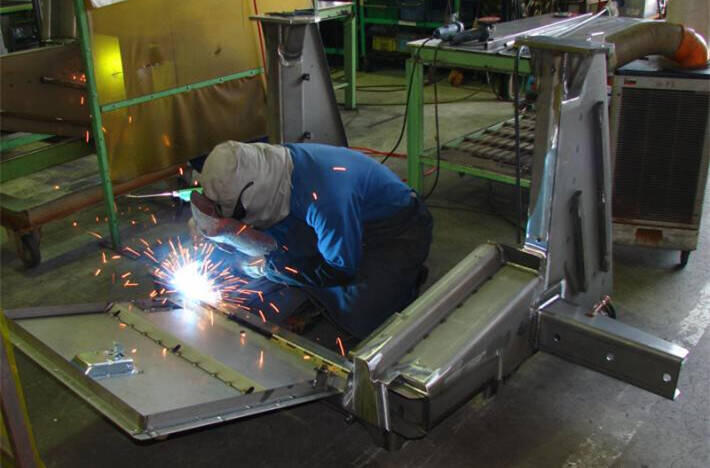Building a Lean Future: 3D Printing's Role in Cost Reduction and Continuous Improvement in Sheet Metal Manufacturing+ View more
Building a Lean Future: 3D Printing's Role in Cost Reduction and Continuous Improvement in Sheet Metal Manufacturing
+ View more
Date:2023-11-06 15:29
Introduction:
As the manufacturing industry seeks to optimize processes and drive cost reduction, lean principles and innovative technologies play a pivotal role. This article focuses on the transformative role of 3D printing in sheet metal manufacturing, specifically its ability to enhance cost-reduction initiatives and foster continuous improvement. By embracing 3D printing technology, manufacturers can unlock new opportunities for efficiency gains, waste reduction, and overall process optimization, leading to a leaner and more competitive future.

1. Embracing Lean Principles in Sheet Metal Manufacturing:
Lean principles provide a roadmap for manufacturers to eliminate waste, increase efficiency, and improve overall quality. In sheet metal manufacturing, techniques such as value stream mapping, 5S methodology, and Kaizen events help identify areas for improvement, streamline workflows, and foster a culture of continuous improvement. By adopting lean principles, manufacturers can lay a solid foundation for cost reduction and operational excellence.
2. The Transformative Power of 3D Printing in Sheet Metal Manufacturing:
3D printing has revolutionized the manufacturing landscape, including sheet metal fabrication. With additive manufacturing capabilities, complex designs can be produced with reduced material waste, increased precision, and shorter lead times. Traditional constraints associated with tooling and prototyping are minimized, enabling greater flexibility and agility. The integration of 3D printing into sheet metal manufacturing opens up new possibilities for design innovation, customization, and cost-effective production.
3. Cost Reduction through Waste Reduction and Material Optimization:
One of the significant benefits of 3D printing in sheet metal manufacturing is the reduction of material waste. Traditional processes often involve cutting and shaping large sheets of metal, resulting in significant waste. 3D printing eliminates much of this waste by building components layer by layer, using only the necessary materials. Furthermore, 3D printing enables the optimization of material usage and lightweight design, leading to reduced material costs and improved cost-effectiveness.
4. Streamlined Workflows and Faster Prototyping:
Integrating 3D printing into sheet metal manufacturing streamlines workflows and accelerates the prototyping process. Traditional methods require time-consuming tooling processes and multiple iterations to refine designs. With 3D printing, manufacturers can rapidly produce prototypes, allowing for quicker feedback loops and design improvements. This accelerated prototyping not only reduces lead times but also facilitates continuous improvement efforts by enabling faster iteration of designs.
5. Customization and Design Innovation:
The versatility of 3D printing allows for customization and design innovation in sheet metal manufacturing. Manufacturers can easily modify designs to meet specific customer requirements, ultimately enhancing customer satisfaction. The ability to create complex geometries and intricate structures opens up new possibilities for product design and performance optimization. By leveraging 3D printing technology, manufacturers can differentiate themselves in the market and offer unique solutions tailored to individual customer needs.
6. Challenges and Considerations:
While 3D printing offers significant benefits, there are challenges to consider. Initial investment costs, limited material choices, and production scalability can be potential barriers for widespread adoption. Skilled personnel and adequate training are essential to harness the full potential of 3D printing technology in sheet metal manufacturing. Additionally, ensuring compliance with industry standards and regulations is crucial for successful implementation.
7. Strategic Implementation and Future Outlook:
To fully leverage the benefits of 3D printing in sheet metal manufacturing, a strategic approach is necessary. Manufacturers should identify suitable applications and areas where 3D printing can bring the most value. Collaboration with suppliers, research institutions, and industry experts can help overcome challenges and drive innovation. Looking ahead, advancements in 3D printing materials, scalability, and automation will further enhance its role in cost reduction and continuous improvement in sheet metal manufacturing.
Conclusion:
As the manufacturing industry embraces lean principles and seeks continuous improvement, integrating 3D printing technology into sheet metal manufacturing offers transformative possibilities. By reducing waste, optimizing material utilization, streamlining workflows, and enabling design innovation, 3D printing plays a vital role in cost reduction and operational excellence. Manufacturers who strategically adopt 3D printing will not only benefit from improved efficiency and cost-effectiveness but also gain a competitive advantage in the evolving landscape of sheet metal manufacturing. Building a lean future requires embracing innovative technologies like 3D printing to drive cost reduction, foster continuous improvement, and ensure sustainable success in the industry.
Share to:
Recommend wonderful blog posts

